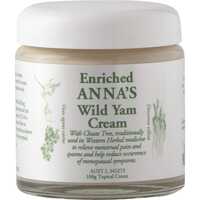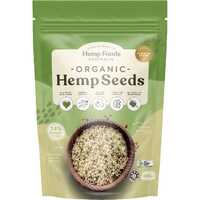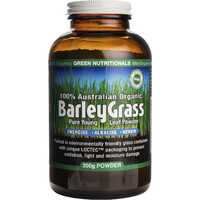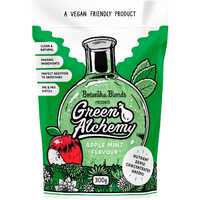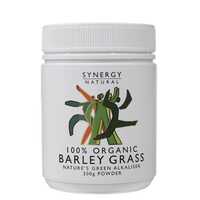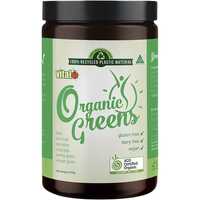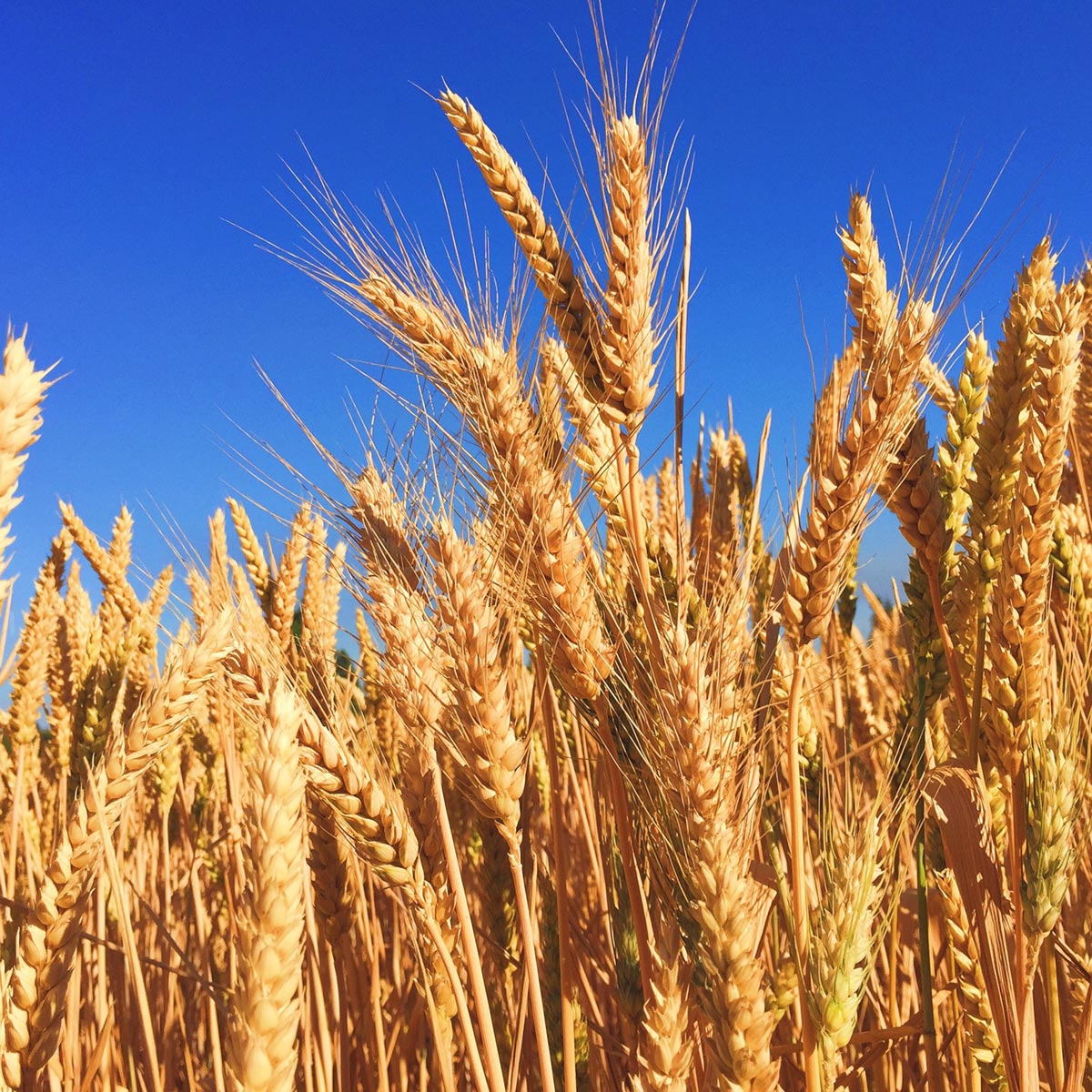Barley is a popular food staple enjoyed all over the world. This nutritious grass has been consumed for thousands of years, and it remains the fourth most popular cereal crop behind wheat, corn, and rice. Barley is grown in a range of environments and used to make various foods, and it even plays an important role in the production of beer. From breads and stews to soups and powders, this popular cereal grain is an integral part of the global diet.
In this article, we'll take a detailed look at barley and everything it has to offer. We'll review its natural origins, look at its traditional uses, and analyse the nutritional profile of barley and barley grass.
What is Barley?
Barley, or Hordeum vulgare, is a type of grass in the family Poaceae, the tribe Triticeae, and the genus Hordeum. That's right; different grasses are classified in tribes within the field of agrostology. Just like human tribes, grasses have native territories that expand and contract over time based on a range of influences. Barley grows in temperate climates, including many of the same places that gave birth to human civilisation. Over many centuries, wild barley mutated and became domesticated to make it more nutritious and easier to harvest.
Along with its long and distinguished history of feeding humans, this simple grass is also widely used for animal fodder. Even today, the majority of barley cultivated around the world is fed to livestock, with just 30% finding its way into human bellies. A large chunk of this 30% is used as fermentable material for beer and distilled beverages, and the rest finds its way onto our tables as breads, cereals, stews, soups, juices, and supplements.
Along with the fibrous kernels of the plant, which include the bran, endosperm, and germ, you can also consume the leafy part of barley grass. Also known as barley leaves or barley greens, this nutrient-rich material offers a number of health benefits. Barley grass consumption has enjoyed a renaissance in recent years, with the leafy part of the plant now widely used to make juices, powders, tablets, and gummies. Hordeum vulgare may be a simple grass, but depending on how it's cultivated, prepared, and consumed, it has a wide range of potential uses.
Different Types of Barley
There are many types of barley, with the traditional classification system splitting it into two-row and six-row forms. Most barley is a type of "covered barley," which includes a tough outer hull around the barley kernel. In order to eat barley, this shell needs to be removed. A less common form is "naked barley," which has a loose shell that falls away during harvesting. Both of these forms only exist in the field, with other classifications used after processing:
- Hulled barley is a whole grain that's minimally processed to remove only the tough outer hull.
- Pearl barley has been polished to remove the outer bran layer and hull. It cooks quicker but is not a whole grain.
- Barley grits and flakes are sections of the kernel created from hulled or pearl barley.
- Barley flour is used for cooking, often as a thickener. Whole-grain barley flour is more nutritious.
- Barley grass is the leaves of the barley plant, which offer additional vitamins and antioxidants.
The Traditional Uses of Barley
Barley is one of the world's oldest cultivated grains. There is evidence of wild barley consumption from 23,000 BC and evidence of barley cultivation in Eurasia from 9,000 to 7,000 BC. Over this extensive period, this simple grass was the primary source of food for many people throughout the world. It was one of the first domesticated grains in the Fertile Crescent, which includes part of Western Asia and the area around the Nile River in northeast Africa.
Much like emmer wheat, einkorn, and other ancient grains, barley helped to fuel the birth of modern civilisation. Barley was the chief form of nourishment in ancient Greece, a major staple in ancient Scandinavia, and the central ingredient in rieska — the oldest of all breads from Finland. In other parts of the world, barley was mentioned in sacred texts, made into a form of currency, and used to symbolise the Mesopotamian goddess Shala.
During medieval times in England, bread made from barley was the staple diet of poor people. While nobles ate wheat bread, barley helped to keep a huge section of the population alive. In fact, it's only fairly recently that wheat, rice, and corn have become more popular than barley. Over the last few decades, we have seen renewed interest in ancient grains, and barley is one of the oldest of them all. When you add nutritious barley grass into the mix, it's no wonder this old plant has been getting so much positive attention.
The Nutritional Profile of Barley
Barley has a rich and balanced nutrient profile, with this cereal crop delivering macronutrients, fibre, vitamins, and minerals. The two most common forms of barley are hulled barley and pearl barley, the former of which leaves the bran and germ intact. With more of the plant available and less processing required, hulled barley offers greater nutritional complexity than pearl barley. While pearl barley has slightly higher carbohydrate and folate content than hulled barley, it is less healthy in every other way. Barley has lots of protein, carbohydrates, and fibre, along with high levels of magnesium, phosphorus, manganese, and selenium.
What About Barley Grass?
Barley grass offers many of the benefits of common barley, along with lots of vitamins, amino acids, antioxidants, and chlorophyll. Also known as barley leaves, consuming this popular green can help to support and enhance a healthy diet. Barley grass is readily available at health food stores and juice bars, regularly appearing alongside other greens like spirulina, wheatgrass, kale, and spinach. Just like these other greens, barley grass is often referred to as a superfood due to its health-boosting properties.
Vitamins
Barley grass has lots of vitamin A, with this fat-soluble substance helping to regulate immune system function, cell growth, and vision, among other things. It's also high in vitamin C, which is central to skin health, wound healing, oral health, and numerous other functions. Vitamin K is also well-represented in barley grass, with this substance integral to heart health, bone growth, and blood clotting. While you can get these three vitamins from many sources, barley grass is an effective and highly efficient way to consume them all.
Amino acids
There are eight amino acids in barley grass, which play a central role in numerous physiological processes. Often referred to as the building blocks of protein, amino acids are used by the body to digest food, repair tissue, produce enzymes, and synthesise hormones and neurotransmitters. There are 22 amino acids in total, nine of which are considered essential. Eight amino acids are found in barley grass: isoleucine, leucine, methionine, phenylalanine, serine, threonine, tryptophan, and valine. There are just two essential amino acids not found in barley grass: histidine and lysine.
Antioxidants
The polyphenols and flavonoids in barley grass play an important role as antioxidants, helping the body fight the dangerous free radicals responsible for many diseases. Foods high in polyphenols are regularly included in healthy food lists, with these beneficial compounds helping to protect the body from oxidative stress and inflammation. Other examples include blueberries, cherries, apples, black olives, dark chocolate, hazelnuts, and pecans. While the vitamins in barley grass were mentioned above in their own category, they are also considered antioxidants.
Chlorophyll
Last but certainly not least, chlorophyll is another beneficial component in barley grass. This life-affirming substance is responsible for its green colour, and it's the central element that ties all green superfoods together. Chlorophyll is fundamental to good health, as it offers a number of potent anti-inflammatory and antioxidant properties. Among other things, it helps to regulate blood pressure and improve digestion. Chlorophyll is also beneficial to gut health, working with the fibre content in barley grass to increase healthy bacteria in the digestive tract and balance your microbiota.
Barley grass is often sold in powdered form, which makes it easy to incorporate into your regular diet. You can add barley grass to juices, smoothies, and shakes; sprinkle some on salads and cereals; and use it while cooking stews and soups. Along with isolated barley grass products, this powerful grass is often sold with other green superfoods. From spirulina and wheatgrass to chlorella and more, these healthy blends make a fantastic addition to almost any diet.
If you're looking for a healthy source of barley grass and other green superfoods, we are here to help. At Healthy Being, we keep a wide range of barley products in stock, including 100% barley grass powders and other fantastic green blends. Check out our website today or contact our friendly team to learn more.


 Certified Organic
Certified Organic Vegan Friendly
Vegan Friendly  Vegetarian
Vegetarian Organic Ingredients
Organic Ingredients Dairy Free
Dairy Free Gluten Free
Gluten Free Keto Friendly
Keto Friendly

















